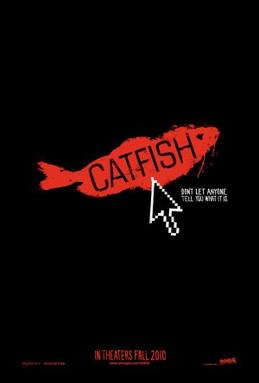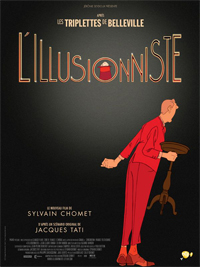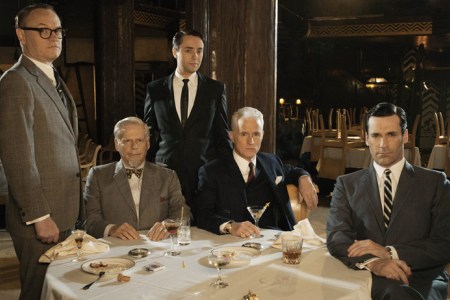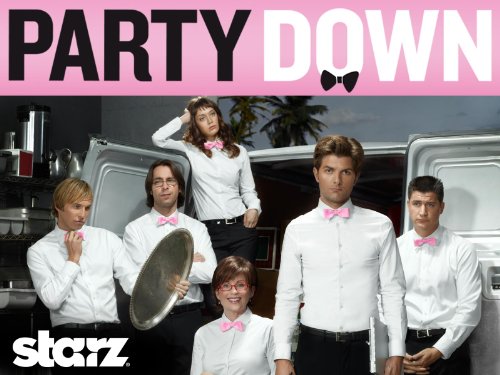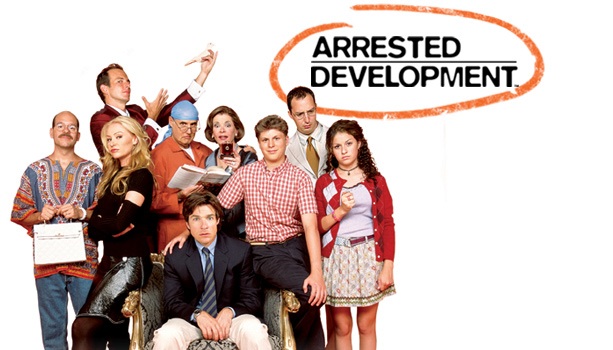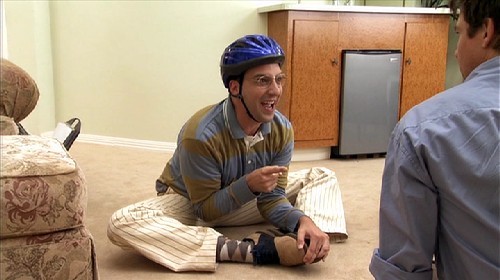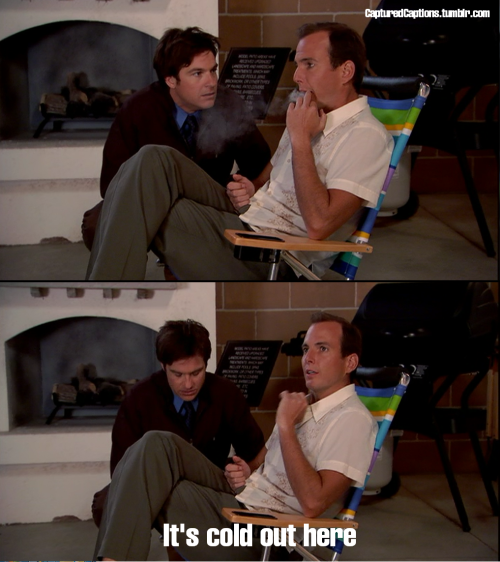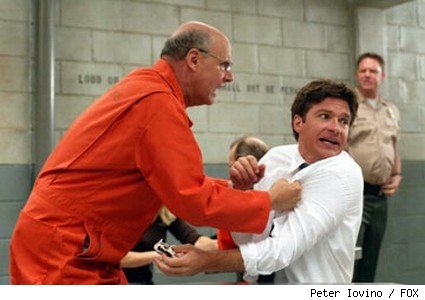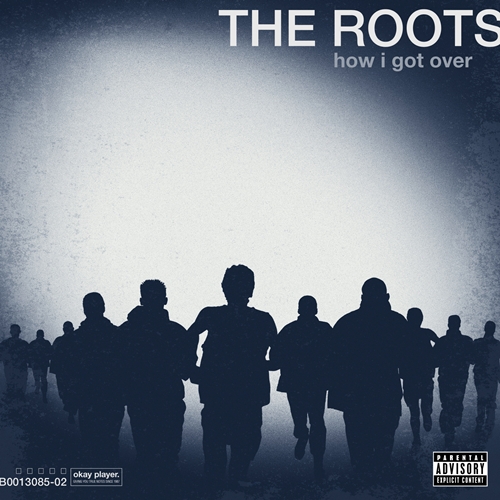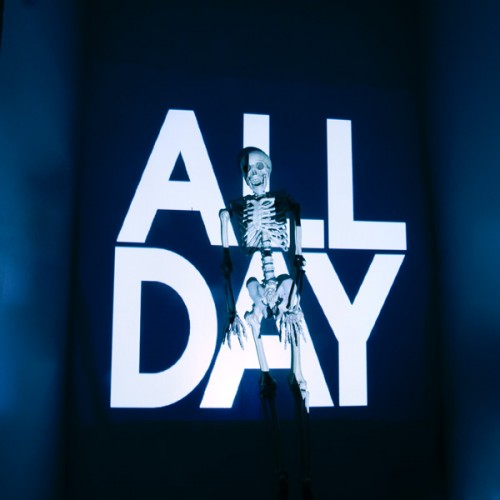
“Why would you deny yourself something you want?”
-Joy asks this of Don, though it’s his job to get everyone else to ask themselves that question;
“The Jet Set” (Season 2, Episode 10)
Run time: July 19, 2007 - present
Created by: Matthew Weiner
Broadcast via: AMC
Don Draper is not Don Draper. In a show about deceit and identity, it is always known to the viewers that Don Draper is a cinematic enigma, an existential antihero indicative of the trapping of the American Dream, desperately fleeing a shameful past while facing up to the demons of his present. Shows are often about people not being what they seem, but Mad Men is the first show I can think of where the main character is so largely living on a lie. He carries a secret with him (several, actually), which he shares with nearly no one for reasons that don’t always seem worth it. Not that there is no truth to the guy; all I’m trying to say is that Mad Men is a show about many things, and one of them is the concept of identity that truly took shape as we know it now in the middle of the twentieth century. The sense of solipsistic self, and the need to address individuality, became popular as many other ideas were beginning to take shape in America.
Capitalism and commerce had been running rampant throughout the 1950s, along with that now old-timey public duty towards an honorable life (versus an indulgent one, the kind we many of us seem more accustomed to now), but ideals were shifting and paradigms changing to accommodate the needs of an accelerating society that was moving faster than ever before – shifting by leaps and bounds with regards to politics, politeness, gender and race dynamics, sexuality, music… You know the deal. Everything changed in the ‘60s, but people still needed things sold to them. Mad Men chronicles the turbulent times of a group of Madison Avenue advertising agents and their friends and family. At the core of this group of mostly upper/upper-middle class Americans is the dashing Don Draper, a stern and selfish suit of a man that nonetheless displays many notable qualities that exemplify him as a so-called self-made success story, the best kind that the American Dream has to offer. Don is cool, “cooler than most players claim to be” as Big Boi would put it, and watching him interact with others through moments of visionary creativity and lackadaisical curiosity are a joy to watch. Being not all that he seems, Don’s mysterious past is fraught with dramatic tensions, the kind that will make everyone (including himself) question just what kind of person he is. (Give it up to Jon Hamm, arriving from obscurity to give one of the most assured performances a lead has had to offer.)
Mad Men isn’t only about identity, or our obsession with ourselves. It’s also about alienation, and ruthlessness, and obliviousness. In the guise of a symbolism-rich soap opera, Mad Men aims to reveal both how far and how little we’ve come, using the prism of the ‘60s to show what we currently feel about ourselves, then as well as now. I seldom ever speak in absolutes, despite my tendency towards fanciful fanfare when I really think something is the shiz, but let me be upfront here and now that this list of shows designated Best are never flawless. I don’t suppose anything made by all-too-fallible humans could ever be flawless, and come to think of it, isn’t something flawless therefore flawed? So getting past the fact that Mad Men is a far from perfect period piece, it is strangely easy (if you’re willing) to relate to and empathize with a bunch of snooty, white fat cats that make far more than what they’re worth “growing bullshit” (a dead farmer’s ghost’s words – it can be that kind of show on occasion) from their corner offices high within skyscrapers in New York City. It helps that they have good writers, and that the crew works meticulously towards creating an authentic feeling world from not too long ago. The sets, the clothes, the props, the products, the camera angles and framing – it almost seems if this all could have been filmed within the ‘60s themselves, except for the fact that Mad Men is mastered in HD.
Though it focuses largely on Draper, Mad Men does feature an ensemble cast, and a great one at that. Most of the characters seem to be fairly typical archetypes at first, more three-dimensional that cardboard cutouts but still easy to recognize for the mores and values they represent. Though each episode is mostly self-contained, Mad Men is another of those multi-season shows that finds characters and situations slowly expanding as each season runs its course. And what appear initially to be mere models emerge into fascinating portrayals of fractured people. Like I said, it’s kind of modeled after soap operas in a way, but this makes for a great cast to zing lines at each other. And for all the joys to unearth within this series, the humor is the kind you don’t have to search for. Sure, there’re moments of unspoken awkwardness and (a little too) on-the-nose winks towards terrible indiscretions of the past, but Mad Men’s writing is filled with brilliant exchanges and succinct lines that are entirely quotable upon first utterance. They are so much fun to repeat because they are delivered by world-class performers when we first hear them.
An interesting facet of Mad Men, to me, is its relationship to time. To paraphrase someone much wiser than myself, all stories are actually about time, whether directly or obliquely. Narration being the controlled release of information that it is, one might logically reason that Mad Men, a time capsule highlighting the 1960s, would be strictly bound by chronological storytelling. But bound is the wrong word for it, because the show deals with the passage of time in interesting ways. Since 2007, each summer audiences have been given a brand new season to feast their eyes and ears and brains upon, yet so much time has passed for the Drapers and company. Season one is set entirely within 1960 (the final scene takes place on Thanksgiving), but the second season starts on Valentine’s Day of 1962. Season 4’s first episode is set around Thanksgiving of '64, the second at Christmas, with the rest of the season coasting through 1965. For any other serial drama, this might seem strange, with weeks passing between episodes, months or years between seasons; yet Mad Men is graceful not just for its acting chops or cinematic flair on display, but also for its seamless transitions between scenes as well as seasons. And Mad Men isn’t even strictly chronological: Several scenes (mostly involving Don) drop back into the past (or future on occasion), but it all flows. Sure, Mad Men can seem to move at a glacial pace sometimes, so wrapped up in the details of everything. But it’s also willing to show things in different contexts, a risky move that I believe pays off enough to warrant its continued use through the series.
Some say Mad Men overtly fetishizes a deeply flawed past, others say it’s too light in its critiquing of former crimes to qualify as relevant. I see it as, simply, a brush-stroked mosaic period drama, a portrait of a time, if not in the time. Yes, Mad Men is about Something, but that something doesn’t have to amount to some obscenely profound statement of political correctness. I don’t think it’s the responsibility of Mad Men to explicitly explore race relations or social mobility or any other facet of what made the ‘60s such an exhilarating time, even though all of those topics are fun to ruminate upon and discuss with others – and yes, it’s a show that takes place in that time, so we expect the time’s events and etiquette to matter. But all that creator Matthew Weiner and his cast and crew have to do is take an interesting batch of characters, place them in an intriguing setting and have them interact in a way that entertains us. What Mad Men excels at is giving us restrained drama that doesn’t spell everything out. Scenes are presented for us to pick apart: How authentic were they? Did they get a reference or set piece right or wrong? Is what’s going on dramatically all a reflection upon the age they inhabit? Some scenes leave enough unsaid for there to be two or three (or more) distinct interpretations of a character’s motives or machinations. Of course, this causes tons of semantic arguments and un-substantive debating, but so it goes when you deal in putting a finer point on things, as opposed to hammering the point home.
I could keep going on, but I think I’ve said enough about this show. If you dig slowburning drama with complex characters and high production values (not that money is everything, but each episode costs about $2 million, and you can see every dollar in every frame), this one is worth your time as much as anything else out there. And don’t let my previous “soap opera” mentionings throw ya – this stuff almost amounts to a great literary work, and certainly is a cinematic coup that will continue to inspire well-crafted dramas for years to come.
BEGINNING & End Credits Score: 6.5/10
A Hitchcockian (well, Vertigo and North by Northwest) styled trailer featuring a nondescript suit (and a silhouette occupying it) falling from a skyscraper, passing by iconic images that were surely conceived by the helplessly falling ad man. It abstractly suggests to you what to expect of our main protagonist’s ambiguity (not to mention the show’s). The anachronistic use of Rjd2’s “A Beautiful Mine” doesn’t bother me – I actually enjoy this more than the Magnificent City instrumental, because without Aceyalone rapping it becomes a little tedious after a bit. The endings (either a sustained fade or a well-placed smash cut to black before credits) feature a classically composed score by David Carbonara, or occasionally a Bob Dylan song. Again anachronistic at times; again, who cares?

BEST CHARACTER: Margaret “Peggy” Olson (played by Elisabeth Moss)
People who complain about unfavorable portrayals of women in this show seem to forget about Peggy Olson. Sure, she’s the one that got out from under (the exception to the rule), starting in the pilot as a secretary and working her way up to copy writer, so she’s not the typical female experience – but she is Peggy Olson, and she wants to live life, and do good work, and be taken seriously, and make something that matters (and smoke a little marijuana). Elizabeth Moss plays a daring young woman learning to stretch her wings with the kind of subtlety that few can pull off convincingly. And yet Peggy is also a force to reckon with, like an unexpected breath of fresh air, glimpsing into the eye of the maker like Don does at his best moments (whether he knows it or not – and I suspect he suspects it – Don is mentoring Peggy in the ways of their world, because he sees in her what he knows he is capable of). If Mad Men is telling me nothing else, it’s that women can achieve everything that men do in the work place. This does mean that Peggy is also capable of lying, obliviousness and manipulation, but Peggy has come a long way from the naïve secretary she started out as, and her arc, more than any other, symbolizes the changes that came with the times that were a-changin’ plenty. She is the female Don, which – given the timeframe – makes her even more fascinating to watch.


BEST SEASON: 4 (of 4 thus far)
Yes, I miss Sal and Paul Kinsey, but the show keeps getting better for me as it goes along. There isn’t a bad episode of Mad Men (this point is hugely debatable), though the first few (or even half) of any season can seem slow and meandering at first; season four, however, had nary a dull moment, I don’t care what people say about “The Suitcase.” Many will disagree with me, of course, but the point I’m trying to make is that everything someone could call a success about Mad Men is highlighted in this season. The actors keep getting sharper (especially Kiernan Shipka as young Sally Draper), and the show is maintaining a consistently quality pace. Matthew Weiner has said he plans to end it on either season six or seven. This sounds like a good plan. It will be hard for him and everyone else to maintain this level of excellence much longer. Plus, the ‘60s gotta end sometime. My money is on Woodstock being a key component to the final season, similar to the Nixon-Kennedy presidential race in the first, or President Kennedy’s assassination in the third (spoiler alert?).
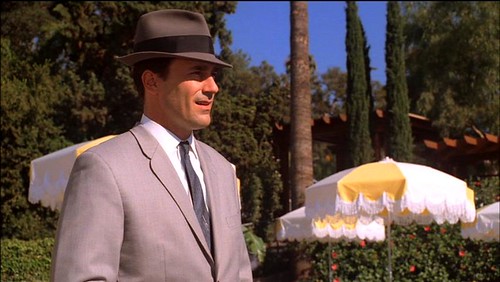
BEST EPISODE: “The Jet Set” (Season 2, Episode 11)
Many people would debate with me on this one (which is always welcome), because it’s not an easy one to understand unless you’ve been following along Mad Men from the beginning; not to mention that many bemoan it, and it is a less than typical example of what the show typically deals with. It’s an unusual episode in that it largely takes place in California, finds Don skirting work meetings to hang out with a bohemian family in an “open door policy” mansion, and takes his misanthropy to its natural conclusion. Of course, there are many sterling office scenes as well: Peggy (and the entire Sterling Cooper office) learning of foreign Kurt’s homosexuality (after he asks her to go see Bob Dylan with him), Roger deciding to marry young (and go about like he was the first one in his position to do so), Duck Phillips negotiating a series of meeting to sell the Sterling Cooper agency to a British firm. All this, set against the riots of ’62, right around the time of the Cuban Missile Crisis (with a sweet drop of The Sound And The Fury), and setting up a rewarding final two episodes that conclude a second solid season (and set up stories that will pay off in future seasons); it all makes for one densely rewarding episode of the Mad Men experience that shows how eccentric and off-beat the show can let itself be.
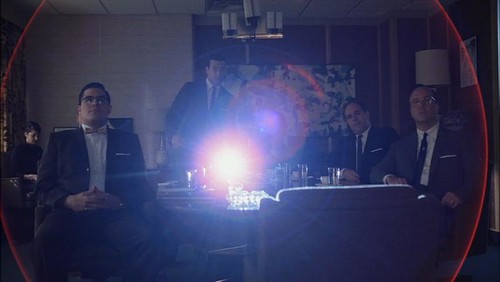
BEST MOMENT: “The meaning of nostalgia,” (from “The Wheel,” Season 1, Episode 13)
I know, choosing this scene for best moment is like when Rob Gordon chose “Smells Like Teen Spirit” as one of his Top 5 Side 1, Track 1 selections, but sometimes the most obvious example is the best one. Don redefines the coolness of the Kodak wheel slide projector by branding it the Carousel, and in selling the importance of nostalgia (“the pain from an old wound”) he also succumbs to it. Mid pitch, Don watches himself and his family in the images on the screen and nearly breaks down into tears. He often seems detached of emotion, but obviously no one is, because Don even sends one of his own out the door, and clearly gets an emotional reaction out of the rest of his staff and his clientele. The monologue and sequence sum up much of the theme and tone of the entire series, but really, it’s simply a great scene in an entire episode full of them, proving that Mad Men is the type of show that builds towards its conclusions patiently and delivers in the final moments. If I were to choose a slightly less obvious mega moment, I’d probably have to go with Season Three’s “Guy Walks Into An Advertising Agency…” You’ll know which moment I’m talking about.

SPECIAL CATEGORY
BEST ENDING: The road to "Babylon" ("Babylon," Season 1, Episode 6)
Setting the bar pretty high very early on, "Babylon" is one of the better first season episodes, largely due to Don's interactions with Midge and her beatnik other lover, but also for its symbolic linkage towards exile, one of Mad Men's many themes. Since this is a "decline and fall" type of modernist take on recent history, Mad Men plays plenty with the whole "tying it all together" type of endings, and few play out or pay off better than this episode's conclusion. Don, Midge, and her bearded chum Roy talk in a coffeeshop about "perpetuating the lie" and "people want[ing] to be told what to do" and the great divide that is beginning to surface in America, and then a young artist onstage plucks a mandolin as he chants the Don McLean song "Babylon" - and the scene shifts to montage, music carrying over mystically, as all the loneliness (solutitary and shared) existing in our characters' world is made clear as crystal. It's a sweeping cinematic moment, a little saccharine admittedly, but very evocative and highly stylized storytelling.
CHECK OUT MORE:
-Benjamin Schwarz wrote a mostly precise essay for The Atlantic about the equal merits and blunders of the show. I don't fully agree with his treatment of Betty or January Jones, I also can't deny that she does come off as the most cliché of the bunch, and it doesn't help the pick types that she'd played by a former model. Still, Schwarz (like Mad Men itself) gets it right more than he gets it wrong.
-Snarky people who know how to point out everything wrong without being able to recognize what is right crack me up. The idea that we watch Mad Men for its escapism and a wistful sense of longing for a different past is obvious to anyone who encounters even the premise, let alone the pilot. A more interesting angle to me is, "How does the writers' use of deliberate clichés, symbols and stereotypes create a source of verisimilitude and authenticity within the fictional universe of Mad Men, and how does that alternative reality reflect upon our actual past and our current view of it." But some people like to get mad that other people enjoy what they don't.

SPECIAL CATEGORY
BEST ENDING: The road to "Babylon" ("Babylon," Season 1, Episode 6)
Setting the bar pretty high very early on, "Babylon" is one of the better first season episodes, largely due to Don's interactions with Midge and her beatnik other lover, but also for its symbolic linkage towards exile, one of Mad Men's many themes. Since this is a "decline and fall" type of modernist take on recent history, Mad Men plays plenty with the whole "tying it all together" type of endings, and few play out or pay off better than this episode's conclusion. Don, Midge, and her bearded chum Roy talk in a coffeeshop about "perpetuating the lie" and "people want[ing] to be told what to do" and the great divide that is beginning to surface in America, and then a young artist onstage plucks a mandolin as he chants the Don McLean song "Babylon" - and the scene shifts to montage, music carrying over mystically, as all the loneliness (solutitary and shared) existing in our characters' world is made clear as crystal. It's a sweeping cinematic moment, a little saccharine admittedly, but very evocative and highly stylized storytelling.
CHECK OUT MORE:
-Benjamin Schwarz wrote a mostly precise essay for The Atlantic about the equal merits and blunders of the show. I don't fully agree with his treatment of Betty or January Jones, I also can't deny that she does come off as the most cliché of the bunch, and it doesn't help the pick types that she'd played by a former model. Still, Schwarz (like Mad Men itself) gets it right more than he gets it wrong.
-Snarky people who know how to point out everything wrong without being able to recognize what is right crack me up. The idea that we watch Mad Men for its escapism and a wistful sense of longing for a different past is obvious to anyone who encounters even the premise, let alone the pilot. A more interesting angle to me is, "How does the writers' use of deliberate clichés, symbols and stereotypes create a source of verisimilitude and authenticity within the fictional universe of Mad Men, and how does that alternative reality reflect upon our actual past and our current view of it." But some people like to get mad that other people enjoy what they don't.


